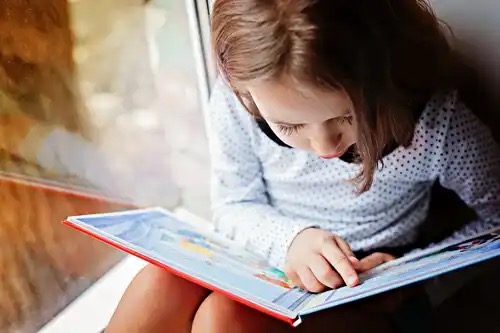Using Stories to Understand Multiple Intelligences

Howard Gardner is a brilliant Harvard professor. His theory of multiple intelligences claims there are eight different forms of intelligence. Stories are a good way in which to approach and develop these, both for children and adults.
Gardner states that intelligence can’t simply be reduced to the most stimulated kind or the kind that’s considered to be most important by the academic world. In fact, he claims that, while logical and verbal intelligences are important, they’re no more important than emotional, social, or musical intelligence.
Howard Gardner’s theory
Before we enter the world of stories, let’s take a look at Gardner’s theory of multiple intelligences.

Gardner states that both adults and children have the opportunity to develop different kinds of intelligence. As a matter of fact, he suggests that instead of talking about intelligence, we should talk about a profile of intelligence, in much the same way as we talk about a profile of a personality.
Gardner’s theory of multiple intelligences proposes that there are eight kinds of intelligence. These are:
- Linguistic intelligence. The ability to understand reading, writing, and speaking.
- Musical intelligence. The ability to sing, perform, listen, play an instrument, or create and analyze music.
- Logical-mathematical intelligence. This is akin to the traditional concept of intelligence. In fact, it concerns the ability to identify, calculate, and verify hypotheses using the scientific method.
- Spatial intelligence. The ability to visualize objects from different angles, recognize faces or scenes, and notice fine details.
- Bodily-kinesthetic intelligence. The ability to solve problems and perform activities with the body.
- Interpersonal intelligence. The ability to understand others and work with them to help them identify and overcome their problems.
- Intrapersonal intelligence. The ability to reflect upon yourself, your emotional states, faults, and attributes, etc.
- Naturalistic intelligence. Used to observe and study nature, classify objects, and establish patterns.
Stories to discover the multiple intelligences
Begoña Ibarrola has written a book, Stories to Discover the Intelligences. The book concerns the understanding and development of Gardner’s multiple intelligences. Ibarrola is well known for her other books such as Stories to Feel and Farewell Stories. In fact, she claims that stories are an excellent method of education. In addition, parents are able to enjoy the stories along with their children.
This psychologist from Bilbao (Spain) takes advantage of the ancient medium of storytelling in producing this book of stories. Each individual tale focuses on the development of one of Gardner’s intelligences.
Ibarrola also includes worksheets in her book so parents and children can work through the multiple intelligences with their children. These worksheets include questions, activities, and helpful hints.
Other tales to stimulate the intelligences
You can find stories to stimulate children’s multiple intelligences both in the contemporary and the classic literary world. For example, any written story is perfect for working on their linguistic intelligence. Because they have to read it, understand it and, if they read out loud, speak.
With regards to the other intelligences, there are many options. For instance, take musical intelligence. A classic tale to use might be The Pied Piper of Hamelin. This gives the child an excuse to sing, play on a flute, and ultimately, start to relate to the music.
Classic tales usually have a moral. For this reason, they’re useful in stimulating logical-mathematical intelligence. This is because the child will learn that certain behaviors and actions equal certain consequences. Hence, they learn a logical cause-and-effect type relationship.
“All the children returned to their homes, bringing happiness back to the kingdom.”
-The Pied Piper of Hamelin-

Working with the other intelligences
To interpret the other intelligences, you can use stories just as you like. Take, for example, bodily-kinesthetic intelligence. This is quite a simple intelligence to work with. That’s because, as the story unfolds, the child uses their body and acts out their own interpretations. On the other hand, they strengthen their intrapersonal intelligence when they read a story themselves. Or, when they read with parents or teachers they develop their interpersonal intelligence.
Naturalistic intelligence can be strengthened by reading any related story. For example, The Jungle Book or The First Big Book of the Ocean. In fact, once you find the best stories for discovering each of Gardner’s intelligences and work out how to use them, the rest is really simple. Indeed, then you can start putting the process into practice. Consequently, your little ones will begin to develop their full potential.
Howard Gardner is a brilliant Harvard professor. His theory of multiple intelligences claims there are eight different forms of intelligence. Stories are a good way in which to approach and develop these, both for children and adults.
Gardner states that intelligence can’t simply be reduced to the most stimulated kind or the kind that’s considered to be most important by the academic world. In fact, he claims that, while logical and verbal intelligences are important, they’re no more important than emotional, social, or musical intelligence.
Howard Gardner’s theory
Before we enter the world of stories, let’s take a look at Gardner’s theory of multiple intelligences.

Gardner states that both adults and children have the opportunity to develop different kinds of intelligence. As a matter of fact, he suggests that instead of talking about intelligence, we should talk about a profile of intelligence, in much the same way as we talk about a profile of a personality.
Gardner’s theory of multiple intelligences proposes that there are eight kinds of intelligence. These are:
- Linguistic intelligence. The ability to understand reading, writing, and speaking.
- Musical intelligence. The ability to sing, perform, listen, play an instrument, or create and analyze music.
- Logical-mathematical intelligence. This is akin to the traditional concept of intelligence. In fact, it concerns the ability to identify, calculate, and verify hypotheses using the scientific method.
- Spatial intelligence. The ability to visualize objects from different angles, recognize faces or scenes, and notice fine details.
- Bodily-kinesthetic intelligence. The ability to solve problems and perform activities with the body.
- Interpersonal intelligence. The ability to understand others and work with them to help them identify and overcome their problems.
- Intrapersonal intelligence. The ability to reflect upon yourself, your emotional states, faults, and attributes, etc.
- Naturalistic intelligence. Used to observe and study nature, classify objects, and establish patterns.
Stories to discover the multiple intelligences
Begoña Ibarrola has written a book, Stories to Discover the Intelligences. The book concerns the understanding and development of Gardner’s multiple intelligences. Ibarrola is well known for her other books such as Stories to Feel and Farewell Stories. In fact, she claims that stories are an excellent method of education. In addition, parents are able to enjoy the stories along with their children.
This psychologist from Bilbao (Spain) takes advantage of the ancient medium of storytelling in producing this book of stories. Each individual tale focuses on the development of one of Gardner’s intelligences.
Ibarrola also includes worksheets in her book so parents and children can work through the multiple intelligences with their children. These worksheets include questions, activities, and helpful hints.
Other tales to stimulate the intelligences
You can find stories to stimulate children’s multiple intelligences both in the contemporary and the classic literary world. For example, any written story is perfect for working on their linguistic intelligence. Because they have to read it, understand it and, if they read out loud, speak.
With regards to the other intelligences, there are many options. For instance, take musical intelligence. A classic tale to use might be The Pied Piper of Hamelin. This gives the child an excuse to sing, play on a flute, and ultimately, start to relate to the music.
Classic tales usually have a moral. For this reason, they’re useful in stimulating logical-mathematical intelligence. This is because the child will learn that certain behaviors and actions equal certain consequences. Hence, they learn a logical cause-and-effect type relationship.
“All the children returned to their homes, bringing happiness back to the kingdom.”
-The Pied Piper of Hamelin-

Working with the other intelligences
To interpret the other intelligences, you can use stories just as you like. Take, for example, bodily-kinesthetic intelligence. This is quite a simple intelligence to work with. That’s because, as the story unfolds, the child uses their body and acts out their own interpretations. On the other hand, they strengthen their intrapersonal intelligence when they read a story themselves. Or, when they read with parents or teachers they develop their interpersonal intelligence.
Naturalistic intelligence can be strengthened by reading any related story. For example, The Jungle Book or The First Big Book of the Ocean. In fact, once you find the best stories for discovering each of Gardner’s intelligences and work out how to use them, the rest is really simple. Indeed, then you can start putting the process into practice. Consequently, your little ones will begin to develop their full potential.
All cited sources were thoroughly reviewed by our team to ensure their quality, reliability, currency, and validity. The bibliography of this article was considered reliable and of academic or scientific accuracy.
Ibarrola, Begoña. (2012). Cuentos para descubrir inteligencias (Padres y maestros). Madrid: Ediciones SM.
This text is provided for informational purposes only and does not replace consultation with a professional. If in doubt, consult your specialist.







